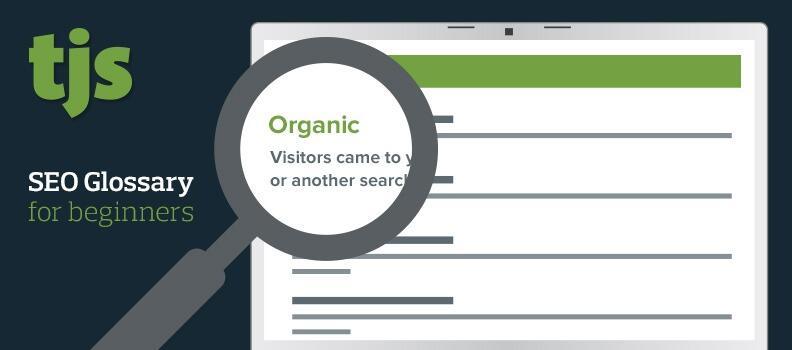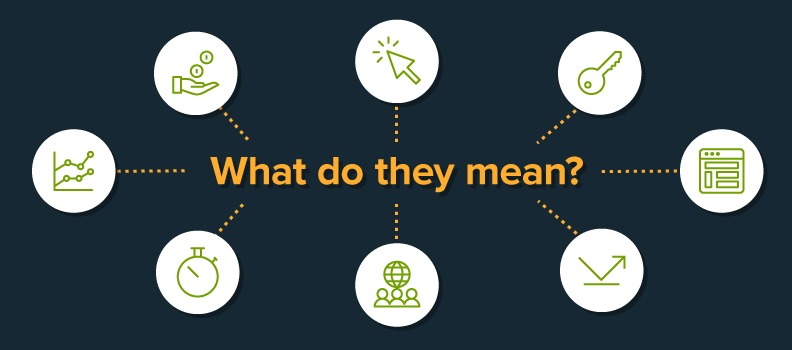
SEO glossary for beginners
Content changes You've added a whole new section to your site. Make sure you've included the new pages in your site-map. That way when Google comes to look at your site it can find the new pages and include them in its search results.
A new country If you're targeting a new country with a product or service then you can tell Google about the new audience and that results should appear in another countries Google listing
Change of domain If you've changed the domain of your site then it's important to tell Google about the change so it can maintain its listings.
Duplicate content If you have many pages on your site that appear to show the same content on each then Google will not now which is the main one to show visitors. In some cases Google will struggle to send visitors to your site if it thinks content is dis-organised and duplicated. Help the search engines out by marking one of the duplicate pages as the dominant one so the others can be ignored.
Remove a page from search If there are pages on your site that don't need to be indexed then tell Google so it doesn't include confusing or irrelevant pages in its results.
Google Analytics Every time a visitor arrives at your site they leave a trail of anonymous clicks and data that are analysed and reported in Google's free product Analytics. The array of reports and options can be daunting when first viewed so we've put together a crib-sheet of the main menu items. Audience The Audience reports provide insight into characteristics of your audience. You can see Active Users which shows the level of enthusiasm for your site over a period of days. You can understand the age-and-gender composition of your visitors in the Demographics section. Your audience's location is also shown here which can give you an insight into what audiences in other countries like about your site. Acquisition The Acquisition section tells you which channels your visitors originated from, such as search engines, social networks or website referrals. A channel is a route by which customers found your site. They could use one or more of the following: Organic
Visitors came to your site after searching Google or another search engine
Paid
Visitors who came to your site via a paid for advert
Direct
The visitor typed your address into the browser or followed a bookmark.
Referral
These visitors followed a link to your site from another referring site.
Social
Visitors who came to your site from a social network
Keywords
This report tells you what search phrases a customer typed in to search engines to find your site. Unfortunately for site owners, Google decided to encrypt keyword data so most of the data is listed as 'not provided'.
Behaviour
The Behavior Overview report provides a graph showing the amount of traffic your website receives and additional metrics. The behaviour report shows some some terms that are commonly mis-used.
Pageviews
The total number of pages viewed in a given period. If a single person views the same page several times then each visit is recorded as a separate pageview.
Unique pageviews
The number of individual people who have viewed a specific page at least once during a visit. For example if one visitor returned to your home page 5 times in a visit, only the first is recorded.
Average time on page
The average amount of time visitors spent on a single page
Bounce rate
The number of people as a % of the whole who left your site on the same page that they arrived without visiting any other pages. A lower % is preferable.
% Exit
The number of visitors as a % of the whole or exited your site from a particular page.
Site content
This is a quick way to see which of your pages are the most popular
Organic
Visitors came to your site after searching Google or another search engine
Paid
Visitors who came to your site via a paid for advert
Direct
The visitor typed your address into the browser or followed a bookmark.
Referral
These visitors followed a link to your site from another referring site.
Social
Visitors who came to your site from a social network
Keywords
This report tells you what search phrases a customer typed in to search engines to find your site. Unfortunately for site owners, Google decided to encrypt keyword data so most of the data is listed as 'not provided'.
Behaviour
The Behavior Overview report provides a graph showing the amount of traffic your website receives and additional metrics. The behaviour report shows some some terms that are commonly mis-used.
Pageviews
The total number of pages viewed in a given period. If a single person views the same page several times then each visit is recorded as a separate pageview.
Unique pageviews
The number of individual people who have viewed a specific page at least once during a visit. For example if one visitor returned to your home page 5 times in a visit, only the first is recorded.
Average time on page
The average amount of time visitors spent on a single page
Bounce rate
The number of people as a % of the whole who left your site on the same page that they arrived without visiting any other pages. A lower % is preferable.
% Exit
The number of visitors as a % of the whole or exited your site from a particular page.
Site content
This is a quick way to see which of your pages are the most popular


